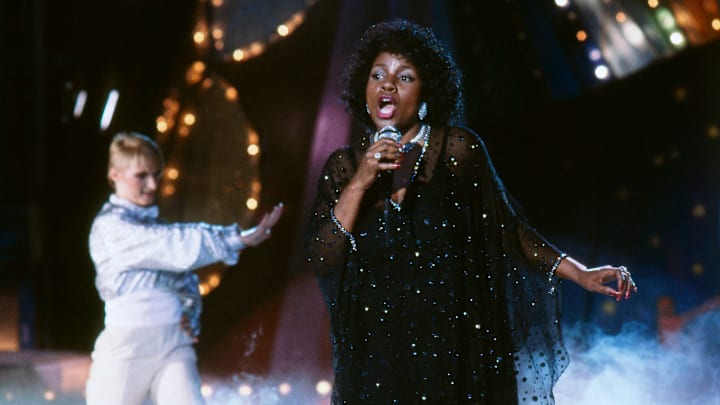If you lived the relatively brief era when it ruled the world in the late 1970s, it’s hard to remain unbiased about disco. For some, it was the soundtrack of their coming-of-age years. Others ran as far and fast as possible from its influence over modern music, fashion, and culture.
You ran toward anything you could find, from the heaviest of metal to the most countrypolitan of country. From the groove of funk to the raw energy of punk. Just as long as it wasn’t disco.
Disco in the USA meant something slightly different from what it meant in the UK. In the U.K., disco was a place. There were discos where kids went to dance, often to glam rock and bubblegum pop. In the USA, it was an aura, as well as a musical style.
4 disco classics that defined the second half of the 1970s
It evolved out of the dance floor showiness of glam, with the added heavy drumbeat of funk. But, if we’re being honest, it never really went much beyond that. It got huge fast, and it got old even faster.
But I do not come to bury disco. I come to praise it. Even if you were not a fan, there were moments to praise. I won’t go too far afield here because we’re sticking to the mainstream music that shaped the era.
If you want to check out some of the more interesting offshoots of disco in the 1970s, give a listen to Dr. Buzzard’s Original Savannah Band or the recently deceased vibe-master Roy Ayers. They produced some fine disco-adjacent music. But here are four songs that became emblematic of the moment.
4 disco classics that defined the second half of the 1970s
“Dancing Queen” by ABBA (1976)
I’d listen to ABBA today more than I’d listen to 98 percent of the songs I heard on the radio in the ‘70s. That wasn’t the case back then. No teenage boy admitted to liking ABBA back in the day. They were able to play upbeat, peppy, dance music without succumbing to the excesses of disco.
Or, perhaps you can think of it this way – ABBA was extremely popular in discos, but it was not necessarily disco music. It was dance pop. Actual songs instead of a creative beat. They had a string of solid hits before “Dancing Queen,” but this is the one that put them over the top in the West.
“Stayin’ Alive” by the Bee Gees (1977)
This one is true disco. You could not avoid it in the late 1970s. I tried. It was the signature sound on the pop charts in 1977 and ’78. Why the Gibb family – the Bee Gees and their little brother Andy – were the ones to be the genre’s most prominent harbingers is still something of a mystery.
The decidedly British Bee Gees had scored major hits a decade earlier with soft, folk pop songs “New York Mining Disaster 1941” and “To Love Somebody.” Then, in 1977, they provided the soundtrack for John Badham’s sensation Saturday Night Fever.
That soundtrack album was, for a time, the biggest-selling album ever released, yielding three number-one hits in the States. “Stayin’ Alive” was played during the movie’s opening scene. Though Andy’s “Shadow Dancing” and the Bee Gees' “Night Fever” finished one and two for the year (in 1978), “Stayin’ Alive,” which finished fourth, was the song that made everyone dance.
“I Will Survive” by Gloria Gaynor (1978)
Gloria Gaynor had been kicking around the music industry for a long time by the late ‘70s. She had modest success. Donna Summer was the queen of the disco era. Gaynor essentially had one hit. But that fact makes the hit – “I Will Survive” – somehow even more potent.
Though a major dance hit, the song is at its heart an old-fashioned soul classic. Freddie Perrin, who co-wrote the song and played the piano riff that kicks it off, had cut his teeth in Motown.
Gaynor had plenty of other dance hits in the decade, but this one combined that rhythm with an uplifting message of triumphing over adversity, a narrative that Gaynor was living. It became a massive crossover hit, the sixth biggest song of 1979 (though it was released in late '78).
“Le Freak” by Chic (1978)
The number three song of 1979 (also released late in '78) was released by Nile Rodgers’ collective Chic, one of the seminal NYC club bands of the late ‘70s. Oddly enough, their biggest hit grew out of a dispute at one of those clubs. When they were turned away from Studio 54, they began writing a song that hurled insults at the entire disco establishment.
The insults eventually morphed into “Freak Out!” which in turn became the classic encouragement that runs throughout “Le Freak.” Chic wasn’t the first or last band to create a song for a dance that they helped popularize. They just did it better than anyone else in the era.
